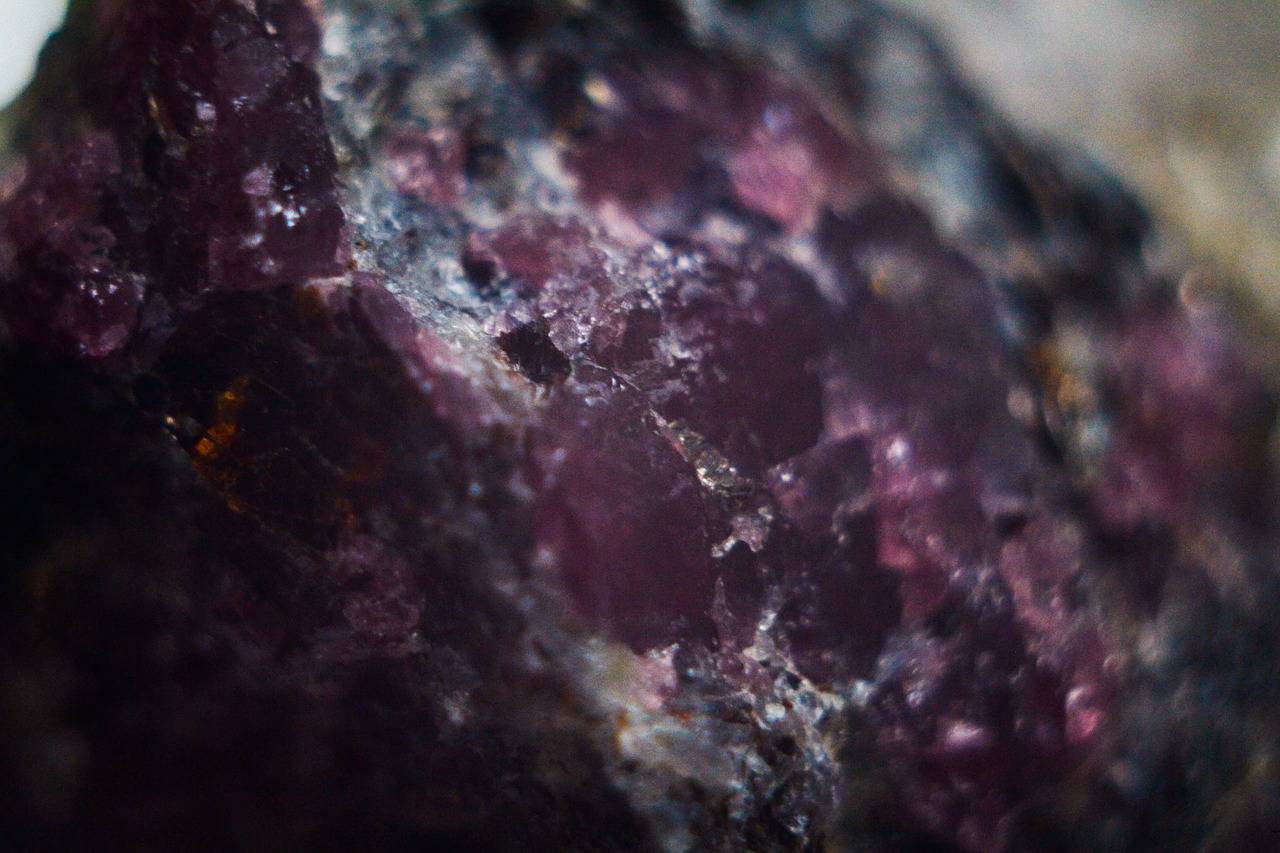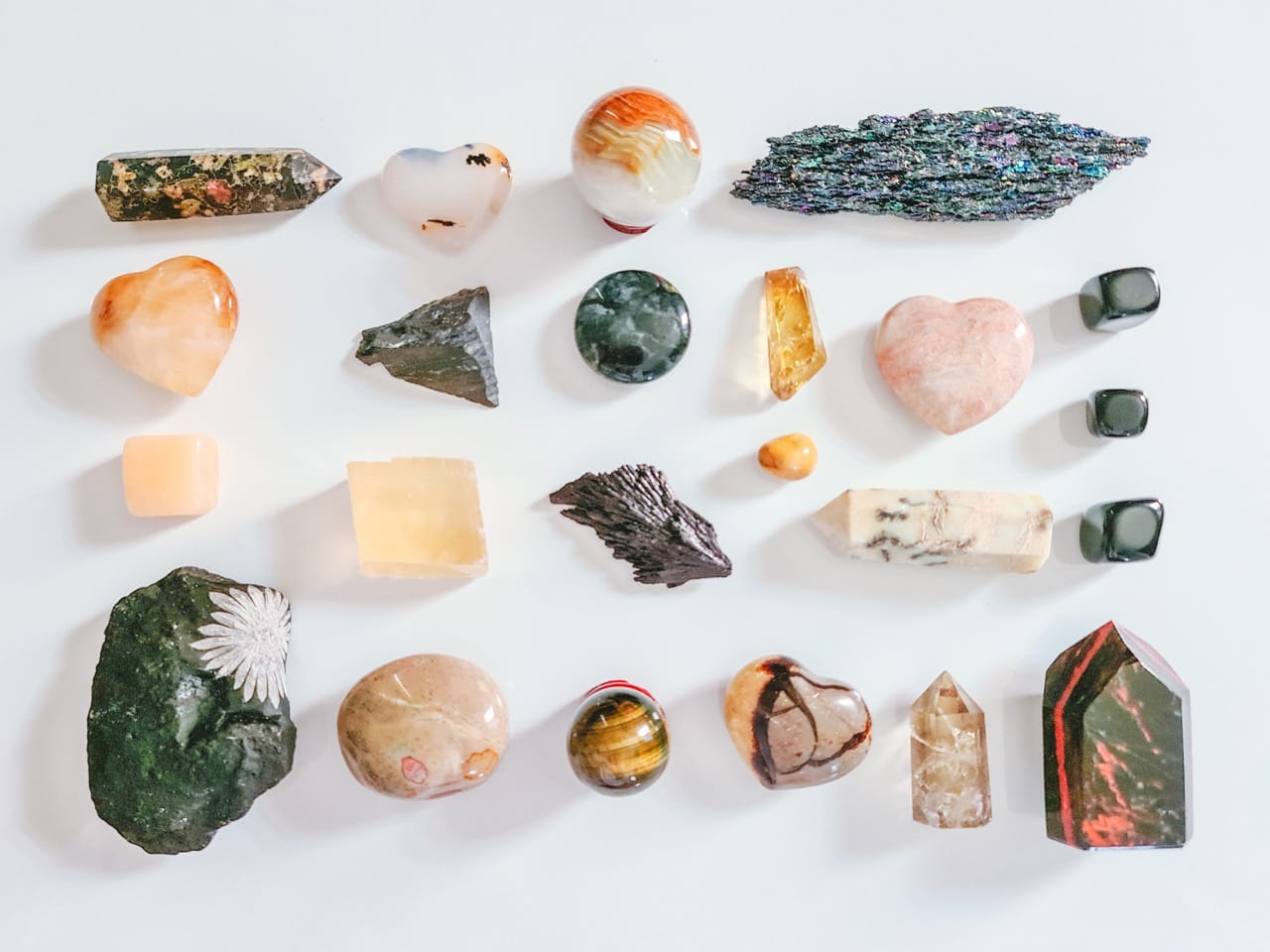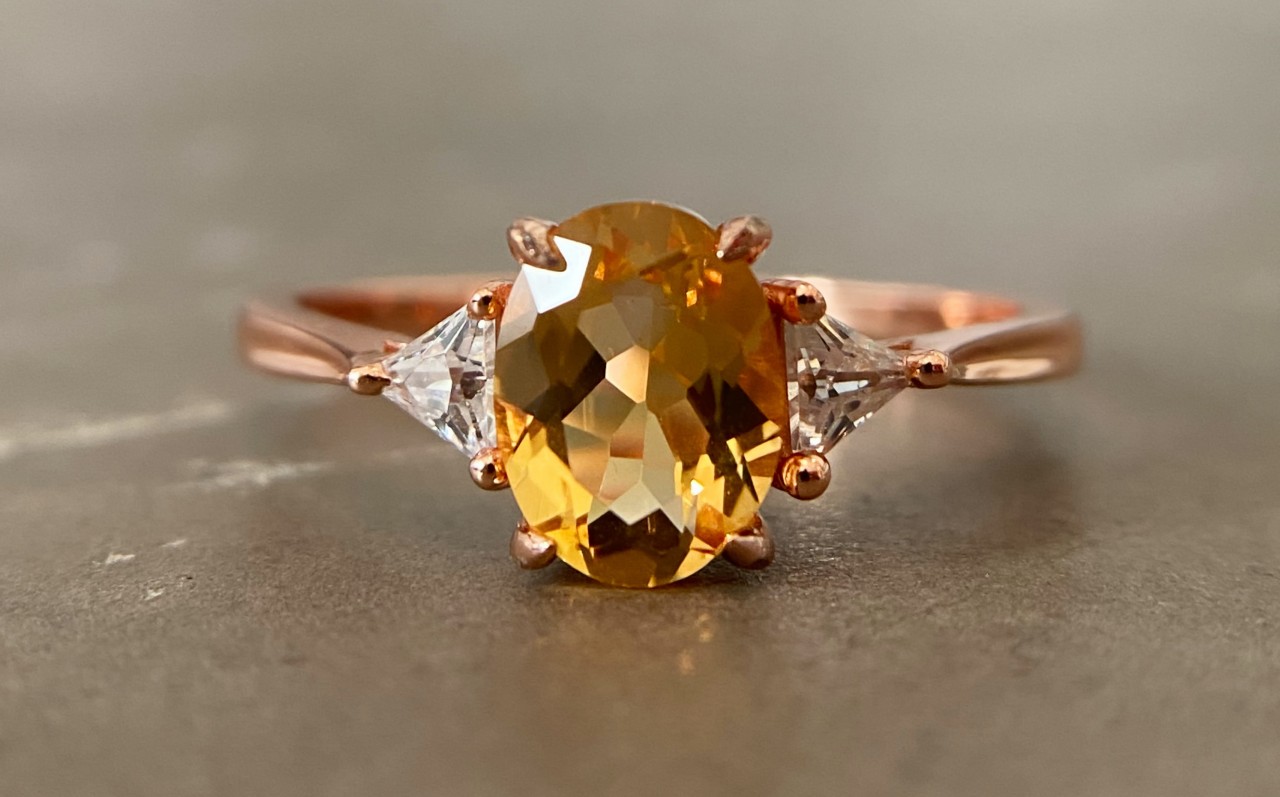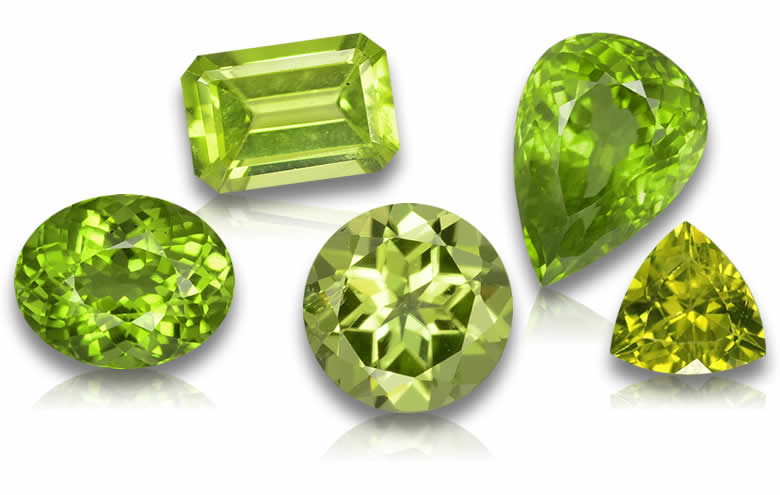Quick info about Garnet Birthstone
- Official birthstone: January
- Colors: Red, orange, yellow, green, blue, purple, pink, brown, black
- Meaning: Protection, friendship, trust, commitment, and love
- Zodiac signs: Capricorn and Aquarius
- Mohs hardness: 6.5 to 7.5
In the tapestry of gemstones that adorn the world, each month claims a unique gem as its birthstone, and January proudly boasts the enchanting garnet. Revered throughout history for its stunning beauty and deep symbolism, the garnet has captured the hearts of many gem enthusiasts and has cemented its place as a cherished gemstone. With a rich historical significance, mesmerizing range of colors, and various cultural associations, the garnet has woven itself into the fabric of human civilization. This article delves into the captivating world of garnets, exploring their origins, properties, historical significance, and contemporary uses.
Origins and Properties of Garnets
Diverse Gemstone Family
Garnets belong to a diverse family of gemstones, showcasing a wide range of colors, chemical compositions, and properties. All garnets share a common crystal structure, known as isometric, which means their crystal lattice is made up of identical building blocks, resulting in symmetrical forms. The crystal structure of garnets is called a “cubic system,” characterized by its three mutually perpendicular axes of equal length.
Historical Roots
The history of garnets is deeply intertwined with human civilization, dating back thousands of years. The name “garnet” can be traced back to the Latin word “granatus,” derived from “granum,” meaning grain or seed. This nomenclature is thought to be inspired by the gemstone’s resemblance to the seeds of the pomegranate fruit, with its clustered and rounded appearance.
Archaeological findings indicate that garnets were used in ancient Egypt as early as 3100 B.C. They were not only cherished for their captivating beauty but also held spiritual significance. Egyptians believed that garnets possessed protective qualities, guarding the wearer against negative energies and providing them with strength and perseverance.
Captivating Spectrum of Colors
While garnets can be found in a mesmerizing spectrum of colors, the deep red variety stands out as the most renowned representation of this gemstone and is traditionally associated with January’s birthstone. This striking red hue is often referred to as “pyrope red,” derived from the Greek words “pyr” (fire) and “ops” (eye), alluding to its fiery appearance.
The red color of garnets is primarily due to the presence of iron in their chemical composition. However, garnets are not limited to red; they can also be found in shades of orange, yellow, green, brown, pink, purple, and even colorless. Each color variation holds unique allure and can be further influenced by factors such as trace elements and environmental conditions during their formation.
Impressive Hardness and Durability
Garnets boast an impressive hardness on the Mohs scale, typically ranging from 6.5 to 7.5. This level of hardness makes them relatively durable gemstones, well-suited for use in various types of jewelry. On the Mohs scale, garnets fall just below minerals like quartz and topaz in terms of hardness.
Their durability and resistance to abrasion make garnets an ideal choice for jewelry that withstands everyday wear and tear. However, like all gemstones, garnets should still be handled with care and protected from harsh impacts and chemicals to maintain their brilliance and beauty.
Enchanting Brilliance and Luster
When skillfully faceted, garnets exhibit a captivating brilliance and luster that enchants the beholder. The gem’s refractive index, a measure of how light bends as it passes through the stone, contributes to its sparkle and fire. The faceting process allows light to enter the gem, bounce off its interior surfaces, and then exit, creating a play of light and enhancing its visual appeal.
Some garnets, particularly the demantoid variety, are renowned for their exceptional brilliance and dispersion, also known as “fire.” Dispersion refers to the separation of white light into its spectral colors, creating a beautiful rainbow effect that adds to the gem’s allure.
Occurrences and Sources
Garnets can be found in various geological environments across the globe. They form through a combination of geologic processes involving heat and pressure, often in metamorphic and igneous rocks. Garnets can also be found in sedimentary rocks, weathered from their primary sources and deposited over time.
Notable sources of garnets include India, Sri Lanka, Brazil, Madagascar, Tanzania, Australia, and the United States. Each location may yield specific varieties and colors of garnets, adding to the diversity of this gemstone family.
Garnets, with their rich historical roots, captivating spectrum of colors, remarkable hardness, and brilliant luster, have earned their place as one of the most cherished gemstones throughout human history. As January’s birthstone, the deep red garnet represents a symbolic connection to passion, love, and vitality. Its versatility and durability continue to make it a popular choice for various forms of jewelry and ornamental objects, enchanting generations with its timeless beauty. From ancient civilizations to contemporary society, the garnet remains a gemstone of profound significance and enduring allure.
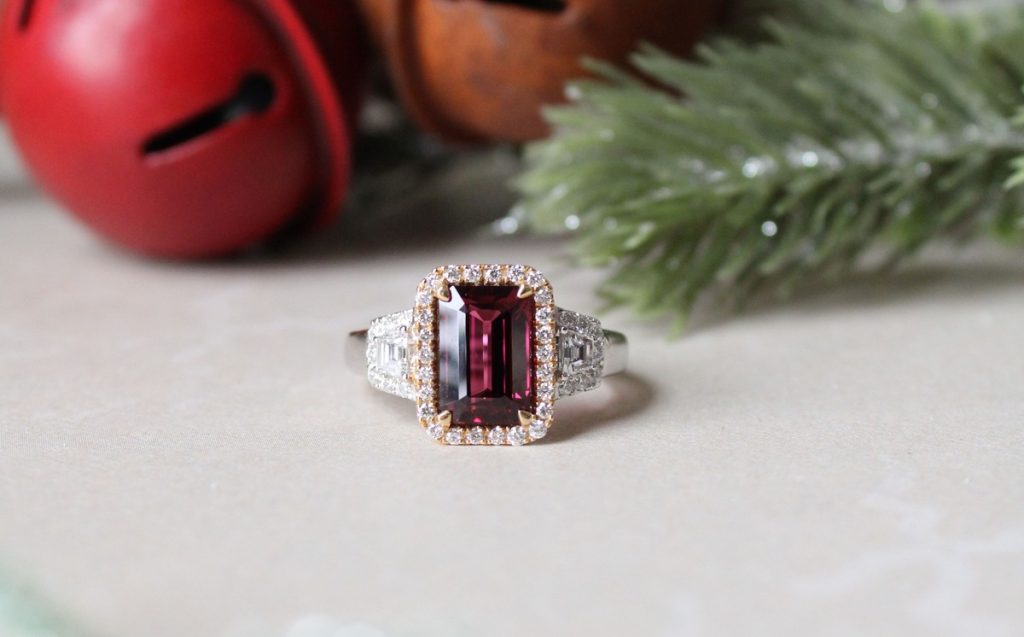
Historical Roots of Garnets
Garnets have left an indelible mark on the annals of human history, and their journey can be traced back thousands of years. The name “garnet” itself holds clues to its ancient origins, as it is deeply rooted in the Latin language. Derived from the Latin word “granatus,” which is linked to “granum” (grain or seed), the name reflects the gemstone’s visual resemblance to the clustered and rounded seeds of the pomegranate fruit.
Garnets in Ancient Egypt
One of the earliest known civilizations to embrace the allure of garnets was ancient Egypt. Archaeological evidence suggests that as far back as 3100 B.C., garnets were valued for both their aesthetic beauty and spiritual significance. Egyptians cherished these gems for their deep red color, which they associated with the sun’s life-giving energy and eternal rebirth.
To the ancient Egyptians, garnets were more than just adornments; they were imbued with mystical properties. The Egyptians believed that wearing garnets could provide protection from malevolent forces and negative energies. Garnets were often incorporated into amulets, talismans, and jewelry, serving as powerful symbols of strength, perseverance, and regeneration.
In burial practices, garnets held special significance. They were placed alongside the deceased, symbolizing the journey to the afterlife and offering protection on their passage. These precious gems were also considered a symbol of immortality and served as a connection to the gods and the afterlife.
Garnets in Ancient Rome and Greece
As time marched on, the admiration for garnets extended beyond Egypt and reached ancient Rome and Greece. The Romans were particularly fond of using garnets in their signet rings and seals, which were essential tools for authenticating documents and showing one’s authority. Engraved garnets were pressed into wax or clay, leaving a distinct impression that served as a personal signature of sorts.
In ancient Greece, the philosopher and historian Pliny the Elder spoke highly of garnets in his work “Natural History.” He described the stone’s brilliance and praised its beauty, reinforcing its popularity in ancient cultures.
Medieval and Renaissance Eras
The Middle Ages and the Renaissance witnessed a surge in the popularity of garnets. During these periods, the gemstones were highly favored for adorning royalty, nobility, and the clergy. Garnets adorned crowns, rings, necklaces, and other regal accessories, reflecting both the wearer’s status and an appreciation for the stone’s captivating allure.
Garnet jewelry also became a cherished gift among lovers and friends, symbolizing devotion, friendship, and mutual affection. As a token of trust and commitment, exchanging garnet jewelry held deep sentimental value.
Garnets in Eastern Traditions
The allure of garnets extended to the East, where they held spiritual significance in various cultures. In ancient Hindu traditions, garnets were associated with the first chakra, known as the “Muladhara” or “root” chakra. This connection to the root chakra represented grounding, stability, and a sense of belonging.
From ancient Egypt to civilizations across the globe, the historical roots of garnets run deep and diverse. Revered for their captivating beauty, spiritual symbolism, and connection to life’s cycles, garnets have woven themselves into the tapestry of human civilization. Today, the fascination with these mesmerizing gemstones endures, and their popularity as January’s birthstone continues to be a testament to their timeless allure. As we continue to unearth the wonders of history, garnets remain a dazzling reminder of the enduring admiration and significance bestowed upon these remarkable gems by our ancestors.
Captivating Spectrum of Colors in Garnets
Garnets are renowned for their breathtaking range of colors, which span a mesmerizing spectrum. While the deep red variety is the most famous and closely associated with January’s birthstone, the allure of garnets extends well beyond this fiery hue. Let’s explore the captivating spectrum of colors that garnets can display, each contributing to the gemstone’s allure and uniqueness.
Pyrope Red: The Fiery Beauty
The deep red garnet, often referred to as “pyrope red,” holds a special place in the hearts of gem enthusiasts. The name “pyrope” is derived from the Greek words “pyr” (fire) and “ops” (eye), evoking the gemstone’s fiery appearance that seems to glow from within. This brilliant red color is predominantly caused by the presence of iron in the gem’s chemical composition. The intensity of the red hue can vary, ranging from a rich crimson to a vibrant scarlet.
Beyond Red: A Kaleidoscope of Colors
While the red garnet is the most well-known, garnets can surprise with an astonishing array of colors, each with its own distinct appeal:
1. Orange Garnets: These gems, sometimes referred to as “mandarin garnets,” display warm and vibrant orange hues. Their color is the result of a mixture of spessartine and pyrope garnets.
2. Yellow Garnets: Also known as “hessonite” or “cinnamon stone,” yellow garnets exude a warm, golden glow. The presence of iron and manganese contributes to their sunny hue.
3. Green Garnets: The most famous green garnet is the “tsavorite,” a variety of grossular garnet. Tsavorites exhibit a stunning emerald-like green, captivating with their brilliance and vivid color.
4. Brown Garnets: Hailing from the andradite family, brown garnets can display a range of warm earthy tones, from light to dark brown.
5. Pink Garnets: Pink garnets, often called “rhodolite,” are a delightful blend of pyrope and almandine garnets, displaying various shades of pink.
6. Purple Garnets: The rare “color-change garnets” or “malaia garnets” can showcase a captivating play of colors, shifting between purplish-red in incandescent light and purplish-violet in daylight.
7. Colorless Garnets: While less common, colorless garnets do exist and are prized for their purity and brilliance.
Factors Influencing Colors
Several factors contribute to the diverse color spectrum seen in garnets. The presence of specific trace elements within the gem’s crystal lattice can imbue the stone with various colors. For example, the presence of iron can lead to reds and oranges, while the presence of chromium is responsible for the green hues found in tsavorites. Manganese can give rise to vibrant yellows, and the rare color-change garnets owe their shifting colors to unique light-absorbing properties.
Environmental conditions during the gem’s formation also play a role in its coloration. The type of rock, the minerals present in the environment, and the geological processes involved all influence the final hue.
Appreciating the Diversity
The stunning spectrum of colors found in garnets offers a treasure trove of options for jewelry designers and gem enthusiasts alike. Each variety of garnet possesses its own allure, allowing individuals to select a gem that resonates with their personal style and preferences. The appeal of garnets lies not only in their captivating colors but also in the rich history and symbolism that accompany these remarkable gemstones. As we continue to uncover the hidden wonders of the earth, garnets continue to shine as gems of incomparable beauty and diversity.
Impressive Hardness and Durability of Garnets
Garnets are prized not only for their captivating beauty but also for their remarkable hardness and durability, making them an excellent choice for various types of jewelry. Their impressive performance on the Mohs scale, along with their resistance to abrasion, ensures that garnet jewelry can withstand the test of time when properly cared for.
Hardness on the Mohs Scale
The Mohs scale of mineral hardness is a standard system used to determine a gemstone’s resistance to scratching and abrasion. It ranges from 1 to 10, with 10 being the hardest (diamond) and 1 being the softest (talc). Garnets rank relatively high on this scale, typically ranging from 6.5 to 7.5 in hardness. The specific hardness may vary depending on the garnet’s type and chemical composition.
With a hardness comparable to that of other popular gemstones like quartz and topaz, garnets offer a level of durability that is well-suited for jewelry meant for regular wear. However, it is important to remember that hardness is not the only factor affecting a gemstone’s durability; toughness and resistance to chipping also play a role.
Durability and Everyday Wear
Garnets’ impressive hardness and resistance to abrasion make them ideal candidates for jewelry that will be worn frequently. Rings, bracelets, necklaces, and earrings set with garnets can withstand the rigors of daily use and remain beautiful over time.
In particular, garnet engagement rings or everyday-wear rings are an excellent choice for those seeking a gemstone that balances beauty with durability. Their rich colors and brilliance allow them to stand out, while their durability ensures they can withstand the rigors of daily activities.
Care and Protection
While garnets are durable gemstones, it is still essential to care for them properly to maintain their brilliance and beauty. Here are some tips for protecting garnet jewelry:
1. Avoid Harsh Impact: Garnets, like any gemstone, can chip or crack if subjected to harsh impacts or blows. It is advisable to remove jewelry, especially rings, when engaging in activities that could cause damage.
2. Chemical Exposure: Exposure to harsh chemicals or cleaning agents can dull the luster of garnets. It is best to remove jewelry before using household cleaners or swimming in chlorinated water.
3. Cleaning: Regular cleaning is essential to keep garnet jewelry looking its best. Use mild soapy water and a soft brush to gently clean the gemstone. Avoid steam cleaners and ultrasonic cleaners, as they may damage the stone.
4. Storage: When not wearing garnet jewelry, store it in a separate compartment or a soft pouch to prevent scratching and avoid contact with other gemstones.
By following these simple care guidelines, garnet jewelry can remain a cherished and radiant piece for generations.
The impressive hardness and durability of garnets, along with their captivating colors, make them a sought-after gemstone for jewelry that withstands everyday wear. As a symbol of love, passion, and vitality, garnets continue to grace engagement rings, necklaces, and other pieces with their enduring allure. Proper care and protection will ensure that the brilliance and beauty of garnet jewelry endure, allowing wearers to treasure these remarkable gems for a lifetime.
Enchanting Brilliance and Luster of Garnets
Garnets possess a mesmerizing brilliance and luster that captivates the hearts of all who behold them. Skillfully faceted garnets showcase a play of light that adds to their allure, making them truly enchanting gemstones. The gem’s refractive index, faceting, and certain varieties’ exceptional dispersion contribute to their scintillating sparkle and fiery appearance.
Refractive Index and Sparkle
The refractive index is a critical property that determines how light behaves as it passes through a gemstone. Garnets, with their high refractive index, possess the ability to bend and reflect light in a captivating manner. When light enters a faceted garnet, it slows down and bends as it moves from air into the denser gemstone. The light then bounces off the gem’s interior surfaces, called facets, and reflects back to the viewer’s eye.
This phenomenon, known as internal reflection, results in the sparkle that garnets are admired for. The more facets a gemstone has and the higher its refractive index, the greater the sparkle and brilliance it exhibits.
Faceting and Play of Light
Faceting is a skilled art that enhances a gemstone’s inherent beauty by strategically cutting and shaping its surface. When garnets are expertly faceted, the play of light within the gemstone is intensified, creating a dance of brilliance that captures attention.
Faceted garnets can take on various shapes, including traditional round brilliant cuts, emerald cuts, pear cuts, and many more. Each cut style brings out different aspects of the gem’s beauty and allows light to interact uniquely with the stone.
Fire in Demantoid Garnets
Among the garnet family, demantoid garnets stand out for their exceptional brilliance and dispersion, commonly referred to as “fire.” Dispersion is the phenomenon where white light is broken down into its spectral colors, similar to a rainbow effect. This dispersion occurs when light travels through the gem and is refracted at different angles, revealing a stunning display of spectral hues.
Demantoid garnets, a green variety of andradite garnet, are particularly famous for their high dispersion. Their exceptional “fire” is often compared to that of diamonds, making them highly prized and sought after by collectors and gem enthusiasts.
The Enchantment Unveile
The enchantment of garnets lies in their ability to not only display vivid colors but also to interact with light in an alluring way. Their captivating brilliance, brought to life through skilled faceting, draws the eye and mesmerizes the observer. Whether it’s the rich reds, vibrant oranges, or striking greens, garnets have a magical quality that sets them apart.
Furthermore, when demantoid garnets reveal their remarkable dispersion, the play of spectral colors adds an extra layer of allure to these already captivating gemstones.
The enchanting brilliance and luster of garnets make them a cherished choice for jewelry and decorative pieces. Skillful faceting allows these gemstones to interact with light in a mesmerizing manner, exhibiting a radiant sparkle that captures the imagination. From the rich red pyropes to the fiery greens of demantoid garnets, each variety offers a unique and enchanting experience for those who admire their beauty. The allure of garnets’ scintillating play of light ensures their place as a treasured gemstone, gracing jewelry and ornamental objects with timeless fascination.
Occurrences and Sources of Garnets
Garnets are distributed across various geological settings around the world, and their formation involves intricate geologic processes. Found in metamorphic, igneous, and sedimentary rocks, garnets exhibit their stunning beauty in diverse landscapes. Numerous locations serve as notable sources of garnets, each contributing to the wide array of varieties and colors within this gemstone family.
Formation and Geological Environments
Garnets typically form under conditions of high temperature and pressure deep within the Earth’s crust. They belong to the silicate mineral family and are part of a group called nesosilicates. As rocks undergo metamorphism, where pre-existing minerals recrystallize due to changes in heat and pressure, garnets can emerge as new minerals within the rock matrix.
In igneous rocks, garnets may crystallize from molten magma as it cools and solidifies. However, their presence in igneous rocks is relatively rare compared to other minerals.
Furthermore, garnets can also be found in sedimentary rocks, having weathered from their primary sources, which are often metamorphic or igneous rocks. Through erosion and deposition over geological time, these weathered garnets accumulate in sedimentary environments, such as riverbeds, beaches, and alluvial deposits.
Notable Sources of Garnets
The global distribution of garnets spans several continents, and each region offers unique varieties and colors of these mesmerizing gemstones:
1. India: India is a significant source of garnets, particularly renowned for its deep red pyrope garnets. The state of Rajasthan is known for producing a variety of garnets, including almandine and pyrope.
2. Sri Lanka: This island nation is famed for its exquisite gemstones, and garnets are no exception. Sri Lanka yields a range of garnets, from vibrant reds to stunning oranges and yellows.
3. Brazil: Brazil is a notable producer of garnets, with deposits featuring a diverse array of colors. Brazilian garnets often include the striking orange spessartine variety.
4. Madagascar: Madagascar is renowned for producing beautiful garnets, including both pyrope and spessartine varieties. These gems showcase vivid reds and mesmerizing oranges.
5. Tanzania: Known for its tsavorite garnets, Tanzania offers striking green gems with a brilliance comparable to emeralds.
6. Australia: Australia is home to a variety of garnets, including almandine and grossular. The country’s vast mineral deposits yield captivating hues, ranging from deep reds to lustrous greens.
7. United States: Several states within the United States are known for their garnet deposits. For instance, New York, Idaho, and California have been significant sources of garnets in various colors.
Conclusion
The occurrences and sources of garnets paint a vivid picture of their widespread beauty across the globe. From the metamorphic realms deep within the Earth to the sedimentary deposits shaped by time and weathering, garnets emerge as nature’s exquisite masterpieces. With diverse colors and varieties originating from locations spanning the continents, these gemstones continue to capture the fascination of gem enthusiasts and jewelry lovers alike.
As a gemstone with rich historical roots, captivating colors, impressive hardness, and enchanting brilliance, garnets have earned their place as a beloved gem throughout human history. As January’s birthstone, the deep red garnet remains an enduring symbol of passion, love, and vitality, cherished in jewelry and ornamental objects for generations to come. Whether mined from the soil of India or discovered amid the rugged landscapes of Madagascar, the allure of garnets endures, transcending time and borders to enchant hearts around the world.

